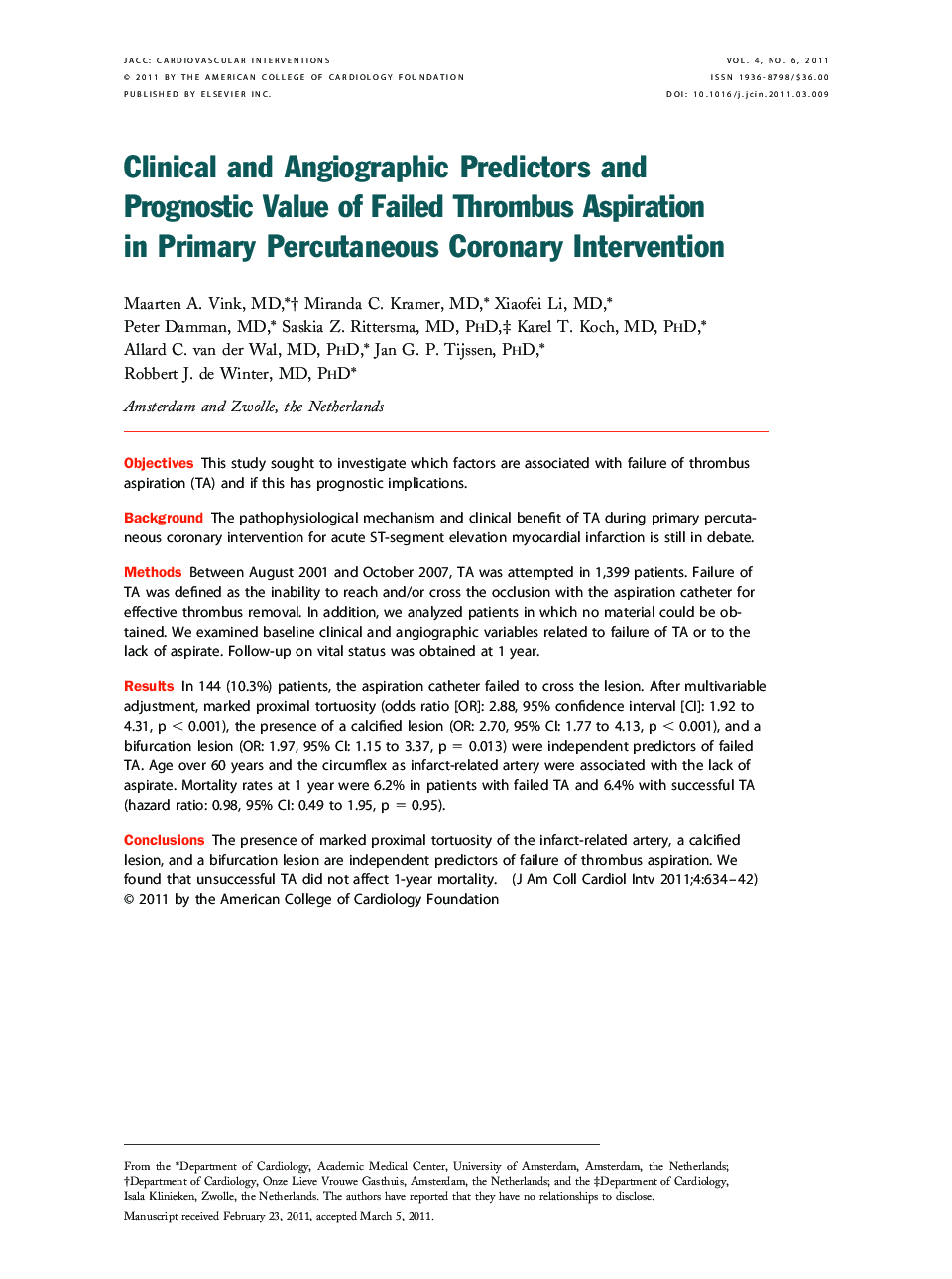| Article ID | Journal | Published Year | Pages | File Type |
|---|---|---|---|---|
| 2941420 | JACC: Cardiovascular Interventions | 2011 | 9 Pages |
ObjectivesThis study sought to investigate which factors are associated with failure of thrombus aspiration (TA) and if this has prognostic implications.BackgroundThe pathophysiological mechanism and clinical benefit of TA during primary percutaneous coronary intervention for acute ST-segment elevation myocardial infarction is still in debate.MethodsBetween August 2001 and October 2007, TA was attempted in 1,399 patients. Failure of TA was defined as the inability to reach and/or cross the occlusion with the aspiration catheter for effective thrombus removal. In addition, we analyzed patients in which no material could be obtained. We examined baseline clinical and angiographic variables related to failure of TA or to the lack of aspirate. Follow-up on vital status was obtained at 1 year.ResultsIn 144 (10.3%) patients, the aspiration catheter failed to cross the lesion. After multivariable adjustment, marked proximal tortuosity (odds ratio [OR]: 2.88, 95% confidence interval [CI]: 1.92 to 4.31, p < 0.001), the presence of a calcified lesion (OR: 2.70, 95% CI: 1.77 to 4.13, p < 0.001), and a bifurcation lesion (OR: 1.97, 95% CI: 1.15 to 3.37, p = 0.013) were independent predictors of failed TA. Age over 60 years and the circumflex as infarct-related artery were associated with the lack of aspirate. Mortality rates at 1 year were 6.2% in patients with failed TA and 6.4% with successful TA (hazard ratio: 0.98, 95% CI: 0.49 to 1.95, p = 0.95).ConclusionsThe presence of marked proximal tortuosity of the infarct-related artery, a calcified lesion, and a bifurcation lesion are independent predictors of failure of thrombus aspiration. We found that unsuccessful TA did not affect 1-year mortality.
